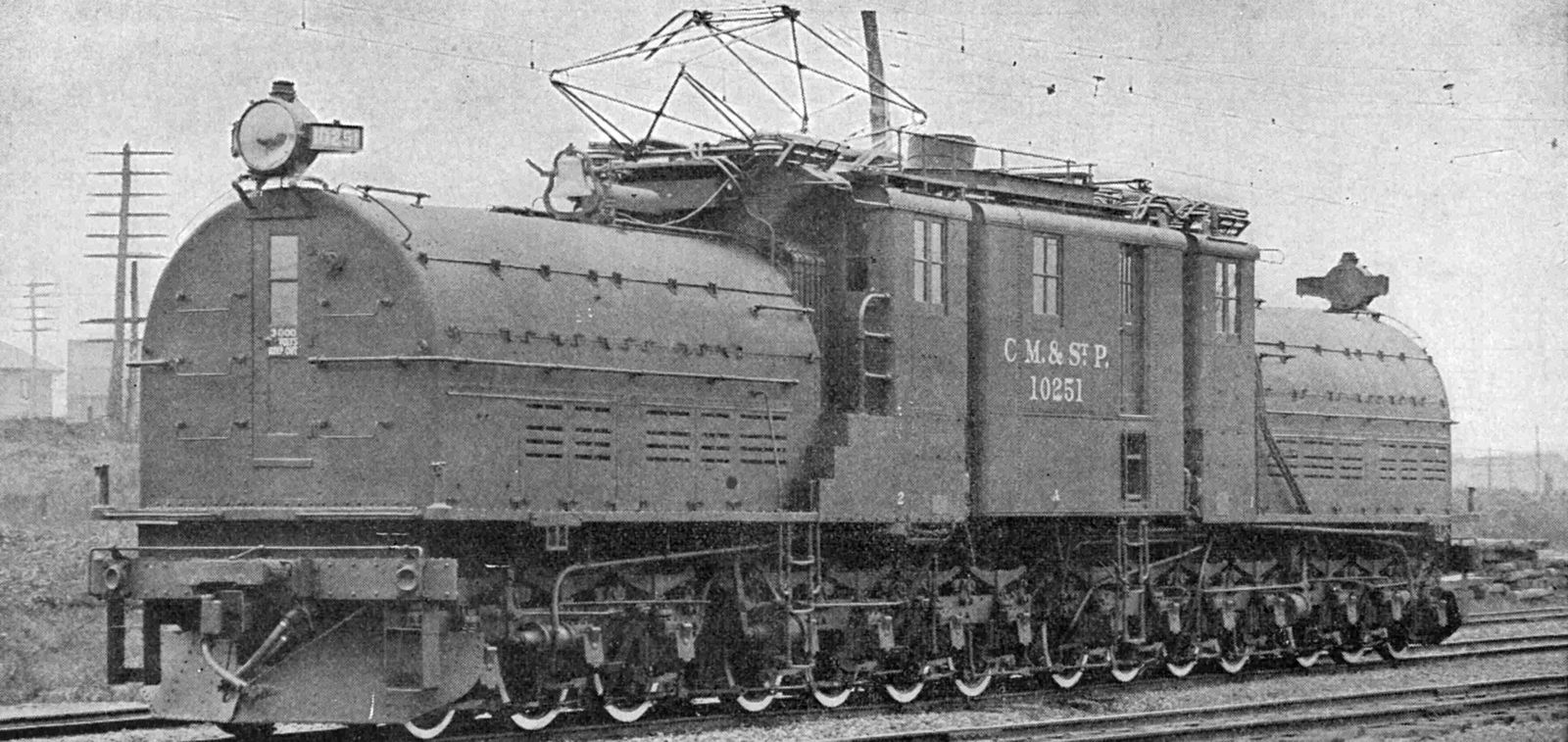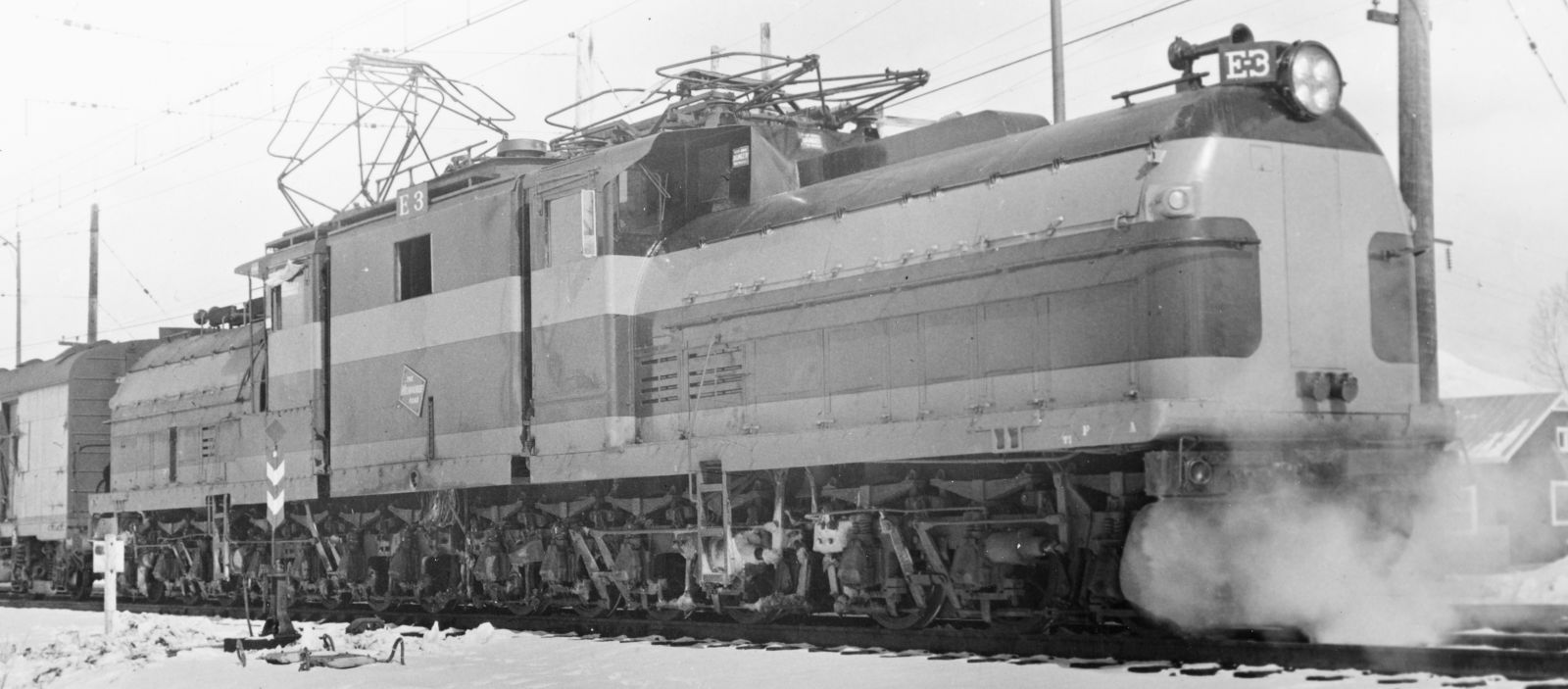After the electrification of the mountain routes over the Rocky Mountains, the Milwaukee Road also took on the Coast Division in Washington. This required an electric locomotive that could pull the heavy passenger trains faster than the steam locomotives available at the time without double-heading. While the Rocky Mountains had many long, straight stretches on the plateaus, here the inclines of the Cascade Mountains had to be negotiated. A total of five examples of the EP-2 were built in 1919, costing $200,000 each and nicknamed “Bipolar” because of the two-pole traction motors used. They were built parallel to Baldwin-Westinghouse's EP-3 because the US Railroad Administration dictated orders to be split between manufacturers.

1922 Locomotive Cyclopedia of American Practice
A total of twelve powered axles were required to achieve the required power. In order to achieve sufficient running characteristics in curves, the chassis was divided into four groups that were coupled to each other. The two outer groups each comprised a leading and two powered axles, while the two inner groups consisted of four powered axles each. The body consisted of three parts and each was movably mounted between two chassis groups. The electrical equipment and a driver's cab were located in the outer parts, while a boiler for the train heating was housed in the middle part.

E-3 after conversion in January 1958 in Butte, Montana
Craig Garver 
Although only five examples were built, they were the flagship of the Milwaukee Road, pulling important long-distance trains like the Olympian. Despite being designed for 90 mph, they were only certified for 70 mph, which was sufficient in their area of application. In 1939, the locomotives that previously had the numbers 10250 to 10254 were renumbered E-1 to E-5.
In 1953 the heavily worn locomotives were completely rebuilt. In addition to a modernized electrical system that allowed higher speeds and multiple controls, they also received streamlined cladding. Shortly thereafter, the locomotives were transferred to the Mountain Division. It was found that the last conversion, which had been carried out by a team not specialized in electric locomotives, had not been carried out optimally. As damage and failures now occurred more frequently, all locomotives were phased out by 1960.